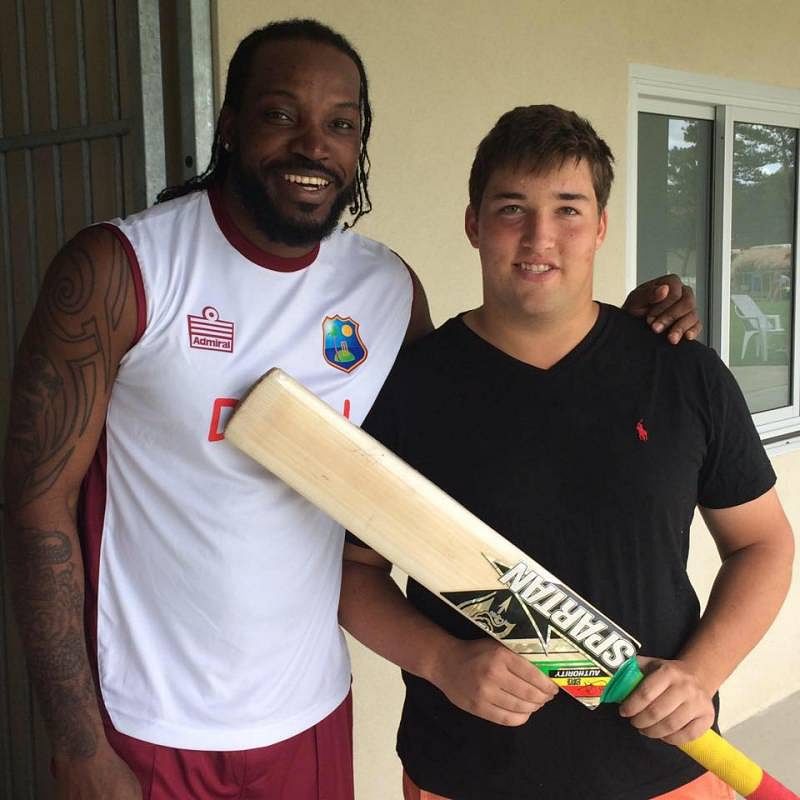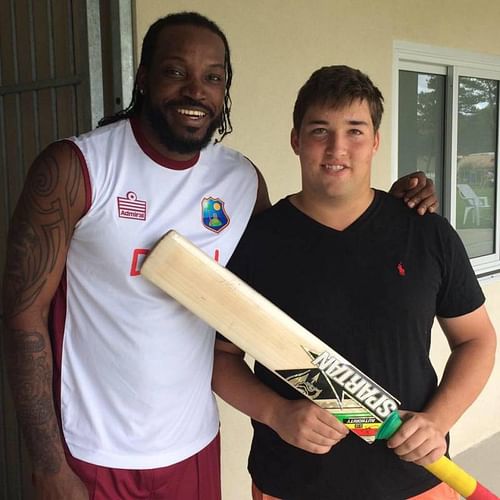
Interview with bat maker and owner of JPGavan: 'Every piece of willow tells a story'

Over the years, we have seen the humble cricket bat evolve in dramatic fashion. Our willow weapons started out with a peculiar look in the 1800s when bats resembled hockey sticks more than anything remotely close to the bats used today. Change was imminent in the mid-1900s when the shape of the cricket bat we are all familiar with began to take place, albeit in the form of thin paddles with barely enough power to reach the boundary.
Development has continued all the way to the present day, where bats have gotten so big that they look as though they could fuel a week-long fire! But have you ever wondered exactly how a cricket bat is turned from an ordinary willow tree into a perfectly crafted piece of beauty, capable of not only withstanding 150kmph missile-like deliveries, but whacking them to the boundary?
Well if you have, you’re in luck! Josh Gavan, owner of the popular Sydney cricket brand JPGavan, has been kind enough to answer some frequently wondered questions about the art of bat making, as well as filling us in on how he started his journey from a regular cricket lover just like you and me to a major player in the cricket bat industry, as well as sharing some interesting perspectives on a few hot topics being debated in the cricket world currently.
Q: Thanks for being here today Josh. To give us a bit of an insight into how your journey to bat making started, tell me, when did you first fall in love with the game of cricket?
I started playing cricket when I was 8 or 9 years old, so it’s been in my life for a long time. There’s always just been something about the finer details of the game that has appealed to me; the feel of leather on willow, the mind games between the batsman and the bowler. I’ve always been very competitive too, which comes out through my cricket.
Q: Where did the idea for JPGavan come from, and how did you make this idea a reality?
JPGavan began with an idea I had for a 5lb cricket bat, the JPGavan Tyrant. The Tyrant was designed to help batsmen cope with the ever increasing size and weight of modern bats. I saw players like Chris Gayle using massive 3lb bats in international games and thought, “Why can’t the average cricketer do the same?” A few swings with the Tyrant, and suddenly a normal bat feels several ounces lighter, assisting with an increase in bat speed. Following the success of the Tyrant, I went into distributing English Willow bats, and initially, I was unsuccessful as I couldn’t cater to many sizes and weights.
From that point, I decided the best option was to learn how to make cricket bats myself. The week after I finished high school, I took a 2 week trip to India to visit a batmaking factory where I learned how to shape and repair bats. The next 4 to 5 months following my trip were spent experimenting on how to perfectly shape cricket bats. Soon after, the custom made JPGavan Little Ripper bat was born.
Q: Was it hard in the beginning to set up your business and break into the cutthroat world that is the cricket bat market?
It was tough; you need a real passion and drive to be in the business of cricket, whether that be playing or making bats. As the market is flooded with brands buying bats from India and putting their stickers on them, my bats were just a small dot on the cricket bat map to begin with. However, I knew that by offering something different, a custom made service right here in Sydney, I could start to grow my brand the right way.
The brands that make it in this market are the ones that really try to make the best bats possible; people are happy to pay a bit more for a better bat. I also make high-end bats for a small handful of brands that use me for individual custom bats or a bulk order of certain shapes to suit a particular demographic. It’s quite specialised, and that’s what I concentrate on.
Q: What is the process you go through from start to finish of crafting a top quality cricket bat?
Personally, my job is mainly to do the customisation of the bat itself. I leave all the standard processing to my supplier in India; they go about batmaking the right way, and I trust them completely. The willow is grown in England. It takes 12 to 20 years to grow the tree itself, and one tree can produce about 40 or 50 bats. If you look at the face of the bat you can see the vertical grains, which represent one year of growth. Bats with more grains are older than those with less; it just depends on how fast the tree can grow. From there the tree is split and planed into clefts, which are dried for a year before heading to my supplier in India. They select the best wood from the willow clefts which are fit for my Grade 1 bats.
Following this, they insert the handle, press the face and cut the bat down to size. When I receive the bats from my supplier and I get an order from a customer, I shape the bat with planes, then sand and buff it to create the best finish possible. Often I can make a bat on the spot in 2 hours, while the customer can continually feel and check the bat to ensure it’s a perfect fit for them.
Q: How do you continually manage to innovate and improve yourself as a bat maker?
In terms of bats, it’s all about learning and improving with each one I make. Each piece of willow tells a story, and it’s about knowing the ending and working towards it. At 19, I already had made bats for many Sri Lankan and West Indian players, as well as providing gear to two international players for the recent ODI World Cup. I learned a lot from these players, and the developments made in my bats from these experiences can be seen today.
I want to be the bat maker that all the pros visit for bats; that’s a personal goal of mine. It's also great to learn about what other brands in certain areas want in their best bats.
Q: Do you think the modern cricket bat is getting too big and creating an unfair advantage for batsmen?
At the end of the day it’s all about entertainment. Thick bats may help batsmen to smash the ball 100 metres into the crowd, but they also make it easier to edge the ball. Faster scoring in Test cricket sees more results, which can only be good for the game. Bowlers will catch up with it eventually. But, as with everything, there is a natural limit to how big bats can be.
I think we are at that stage right now. Unless players decide to increase bat weight and lose bat speed and placement ability in the process, then bats will remain at their current size. I would like to see the Dukes ball introduced a bit more so we have the competition of quality swing bowling and big hitting batsmen. We would really see the skill of both batsman and bowler.
Q: What are your goals for JPGavan going forward?
My main goal is to continually learn to the point that I create the best bats here in Australia. Aussie manufacturing is dying and batmaking is no exception. There are certainly some some other young batmakers coming through, and I want to be the best! I’ve always loved being around player’s bats and seeing what shapes and feel they like, and that motivates me to be able to cater to all needs for any player.
Q: Is it reasonable to suggest that we may see JPGavan in the Test arena in the near future?
I think it’s likely that we will see JPGavan on the Test scene sooner rather than later, although it won’t necessarily be with my stickers on the bat. For those that don’t know, a lot of players purchase bats from different bat makers and then put the stickers on the bat of whichever company offers them the most money. Very good for the individual and the game in general so I don’t have a problem with it; the player gets to use the best bats possible and can support themselves and their families.
If the opportunity arises for JPGavan bats to be used by a Test player I will jump at the chance. Unfortunately, there are high sponsorship and match payment costs, especially in Australia. Again, this is great for the individual and the game itself to move into a more professional sport, but it does leave smaller brands like myself a tad behind. Slowly, I am building contacts through the high-quality nature of my bats, and I am sure I will have more international orders in soon.
Q: Lastly, what is your prediction for the upcoming Ashes series?
Aussies all the way, no doubt in my mind! Australia’s bowling line-up is incredible and it’s going to be hard for England to compete. There will definitely be some slow, turning wickets, but the likes of David Warner, Michael Clarke and Steven Smith can be devastating in these conditions. Above all else, the key to England’s success will be getting Brad Haddin out. He was my man of the 2013/14 series, no disrespect to Mitchell Johnson at all.